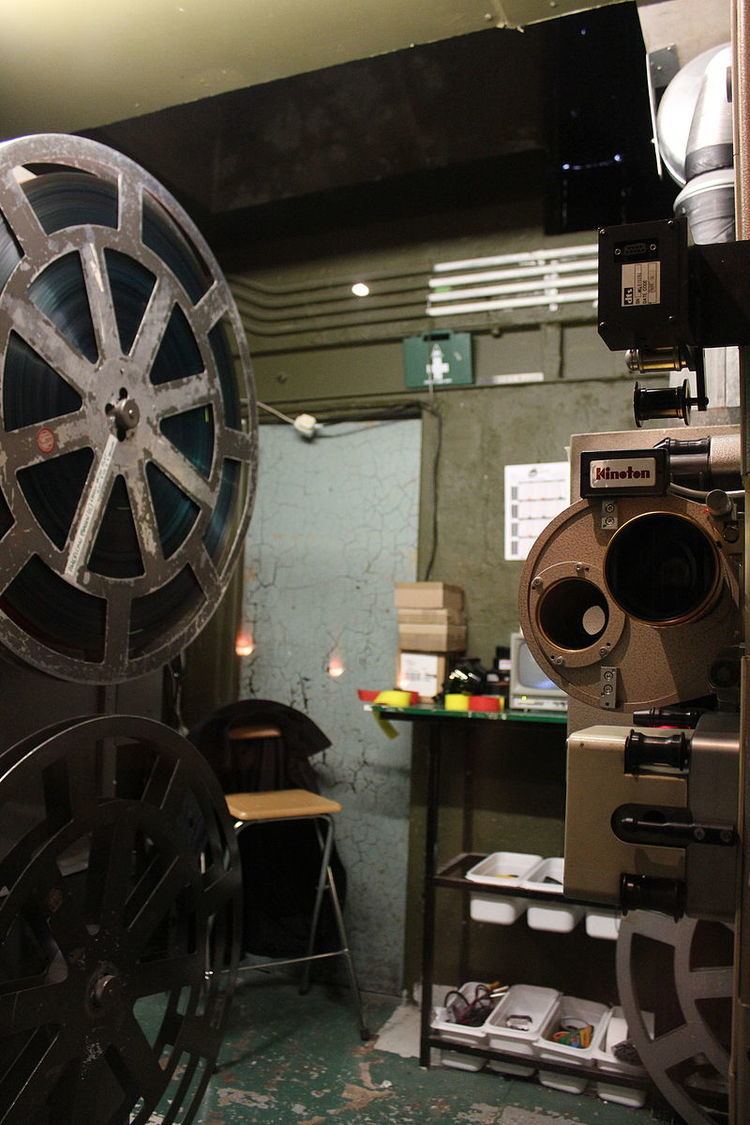 | ||
A projection booth (US English), projection box (British English) or Bio box (Australian English) is a room or enclosure for the machinery required for the display of movies on a reflective screen, located high on the back wall of the presentation space. It is common in a movie theater.
Contents
History
During the early cinema period (1895 to the late 1900s approximately), the projector was typically located and operated within the theater auditorium itself. The move to physically segregated projection booths resulted from the emergence of auditoria specifically designed for the projection of movies, which was caused by a combination of the growing popularity of cinema and increasing concerns over the safety risks of nitrate film. Projection booths that were segregated and equipped with fire prevention, fighting and containment infrastructure gradually became a legal requirement throughout the developed world. A typical example of the regulation that emerged during this period was the fire safety provisions of the Cinematograph Act 1909 in the United Kingdom.
Historically, movie projectors prior to modern automation would include a bell, activated by centrifugal force when the supply reel reached an appropriate speed. Two projectors would be used, requiring that the projectionist switch between the "operating" and "ready" projectors when a cue mark was visible on the screen in the upper right corner. The bell alerted the projectionist (who had likely viewed the movie too many times to ensure alertness) that attention was required.
Current Usage
Projection booths remained a standard feature of movie theaters even after the introduction of safety film in the early 1950s, because they remained useful for several other purposes. These include isolating the noise produced by opto-mechanical projectors from the audience, providing appropriate atmospheric control for the projection and film transport equipment (including, in more advanced booths, the use of HEPA air filtration to prevent dust contamination of the film prints in use), the provision of work space for the projectionist to prepare prints for projection and maintain the equipment, and the isolation of dangerous equipment and infrastructure (e.g. potentially explosive xenon bulbs and three-phase power) from untrained members of the public. The windows through which the image is projected are usually made from a special, high grade Glass designed to minimise light loss through absobtion and reflection. They are sometimes called portholes by projectionists, possibly because they are usually much smaller than the windows typically found on the side of buildings, to mimimize sound leakage into the auditorium.
Some theaters built or refurbished since the introduction of Digital cinema have eliminated the booth altogether, replacing them with a digital projector hung from the ceiling or rear wall of the auditorium.
